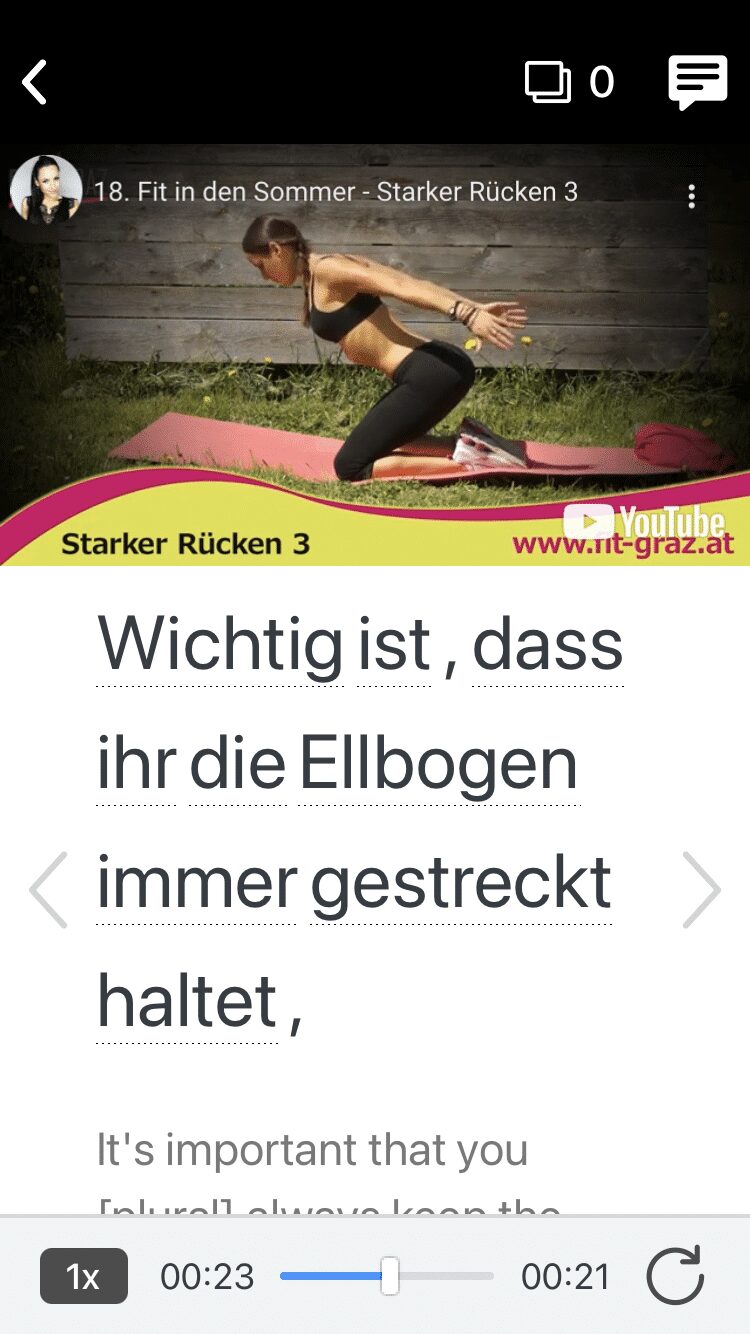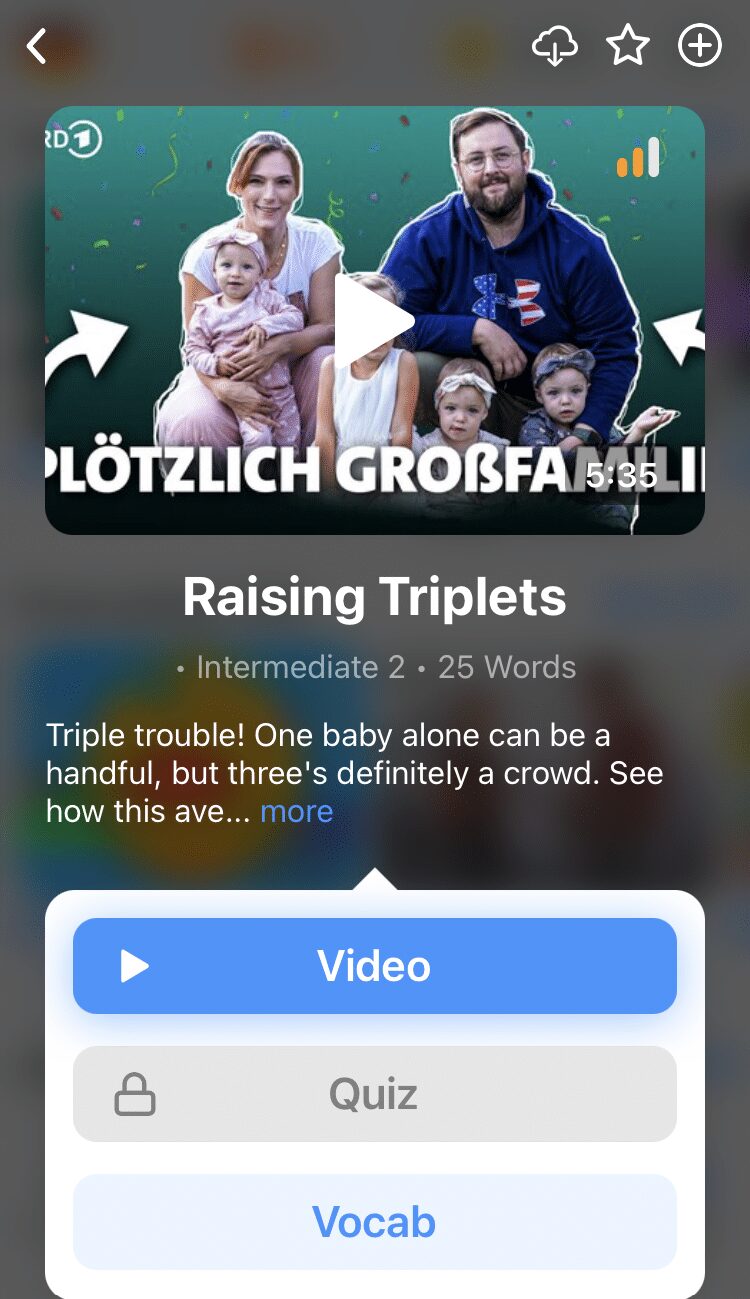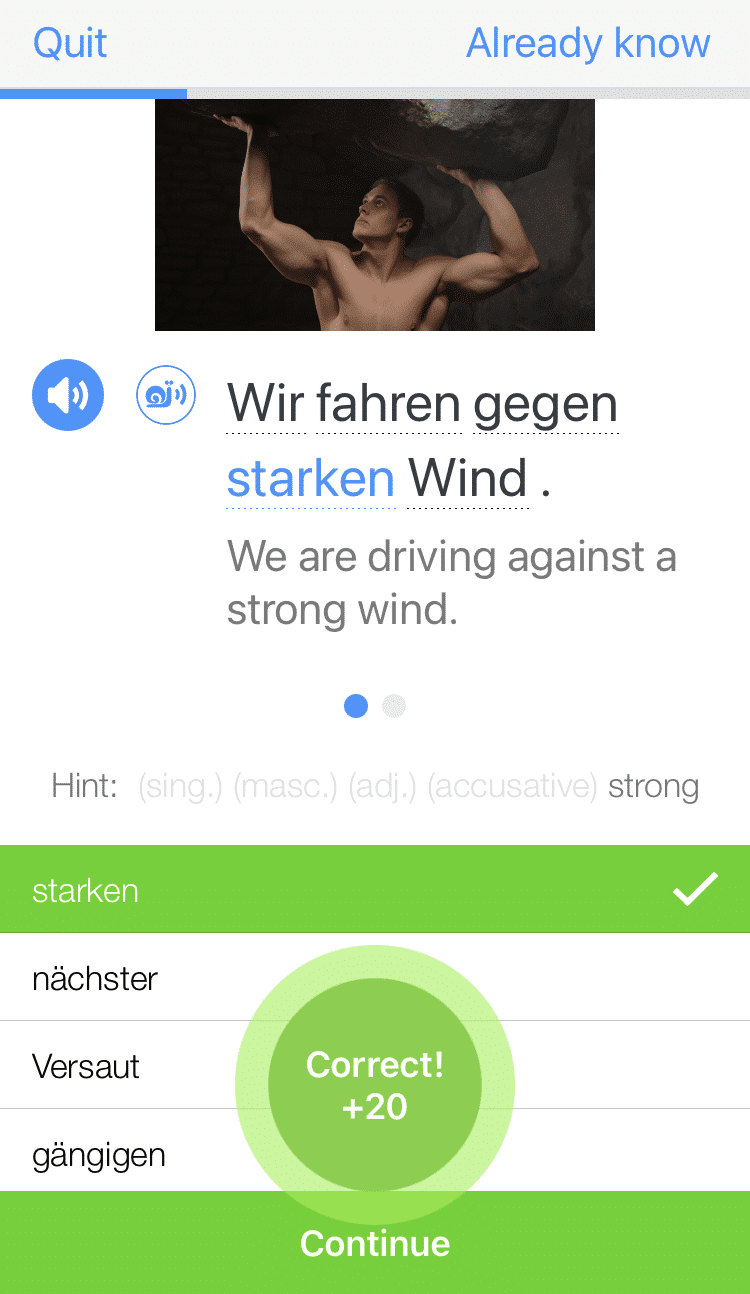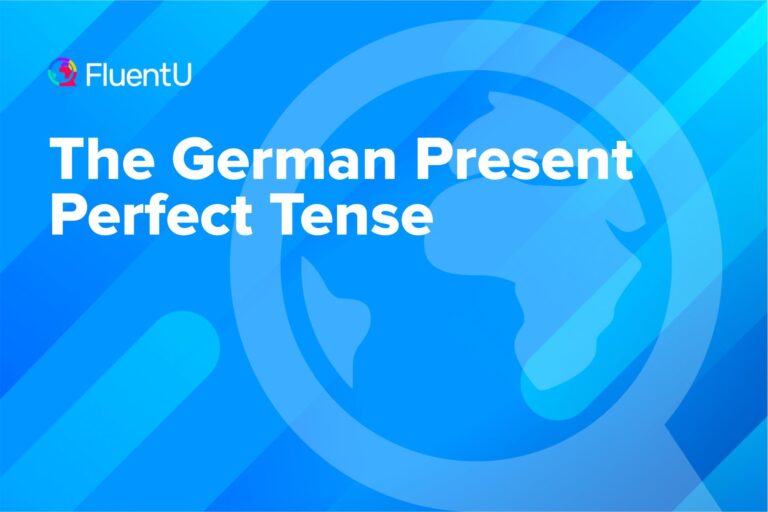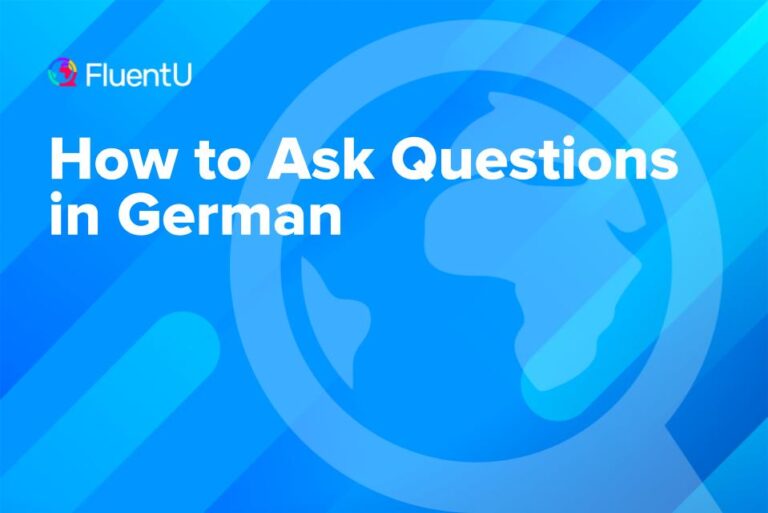The German Past Participle

The past participle, known as the Partizip II, is a special conjugation of a verb used in the Perfekt (present perfect tense), Passiv (passive voice) and as an adjective.
In English, we usually form the past participle by adding -ed (or -en) to a word. For example: “I have finished my homework” or “The meal was prepared by a professional chef.”
Because the Partizip II is used in more difficult grammar structures, understanding it well is essential for reaching an advanced level of German proficiency. Read on to learn all about the German past participle, including the rules for forming it and its various usages.
Download: This blog post is available as a convenient and portable PDF that you can take anywhere. Click here to get a copy. (Download)
How to Form the German Past Participle
Before we cover the three basic uses, let’s review how to construct the German past participle first. We cover the different types of verbs (strong, mixed and weak) extensively in this post and this post, but here’s a quick summary before moving forward:
Weak Verbs (Regular Verbs)
Weak verbs are regular German verbs. To correctly conjugate them, find the stem of a verb by removing the –en ending.
For example, the stem of machen (to do) is mach.
Once you have the stem, add a ge- prefix at the beginning and a –t to the end.
machen → gemacht
Here are other examples:
| Regular Verb | Meaning | Past Participle |
|---|---|---|
| spielen | to play | gespielt |
| kochen | to cook | gekocht |
| hören | to hear/listen | gehört |
| fragen | to ask | gefragt |
| lernen | to learn | gelernt |
Strong Verbs (Irregular Verbs)
Strong verbs are your irregular German verbs, like essen, which often have spelling changes when conjugated.
To conjugate a strong verb, simply add ge- to the beginning of the word, apply the appropriate spelling change and leave the -en on at the end.
Sometimes there won’t be a spelling change in the Perfekt, but the strong verb conjugation rules still apply.
Examples:
| Irregular Verb | Meaning | Past Participle |
|---|---|---|
| essen | to play | gegessen |
| fahren | to cook | gefahren |
| schließen | to hear/listen | geschlossen |
| nehmen | to take | genommen |
| sprechen | to speak | gesprochen |
Mixed Verbs
Mixed verbs are a mixture of the two types. Mixed verbs tend to be regular in the present tense, but combine the ending of a weak verb (-t) with the vowel change of a strong verb in the past tense.
Examples:
| Irregular Verb | Meaning | Past Participle |
|---|---|---|
| bringen | to play | gebracht |
| wissen | to know | gewusst |
| denken | to think | gedacht |
| brennen | to burn | gebrannt |
| rennen | to run | gerannt |
After learning the forms of these verbs, one way to internalize them better is by constantly seeing them in context, through German media like TV shows, songs and movies.
FluentU takes authentic videos—like music videos, movie trailers, news and inspiring talks—and turns them into personalized language learning lessons.
You can try FluentU for free for 2 weeks. Check out the website or download the iOS app or Android app.
P.S. Click here to take advantage of our current sale! (Expires at the end of this month.)
Now that we’ve got the basic conjugation covered, let’s move on to the three most common uses of the past participle.
Uses of the German Past Participle
The Past Participle in the Perfekt Tense
When it comes to learning the past participle, the Perfekt tense is where you should start.
Germans use the Perfekt tense to describe an action that was finished in the past, virtually identically to the Präteritum or the simple past tense.
Example:
Ich habe Brot gegessen. (I ate bread.)
Depending on the verb/action, it’ll either be paired with haben (to have) or sein (to be).
Learning which verbs are paired with haben and which are paired with sein can take a little practice. But a good rule of thumb to follow is that most verbs in the Perfekt are paired with haben, but verbs of movement like gehen (to go), kommen (to come), fahren (to drive or go), or that describe a change of state like sterben (to die), aufwachen (to wake up), explodieren (to explode) will use sein.
Other factors to remember
The Perfekt structure mirrors the English present perfect tense; both forms use an auxiliary verb and a past participle:
I have worked all week long.
However, the English sentence gives the impression that the action is ongoing (you still have work to do this week). Slightly different, Germans use the Perfekt when discussing a past event that has been completed.
So while an English speaker might be tempted to translate Ich habe Brot gegessen to “I have eaten bread,” an equally (and probably more accurate) translation would be “I ate bread.” This shows the action is completed.
Tips:
- In a normal sentence construction, the past participle will always be at the end.
- Although there are a couple of different conjugation patterns for the past participle, the nice thing is that the form doesn’t change depending on the subject of the sentence. Here’s how essen (to eat) looks with different subjects:
Ich habe Brot gegessen. (I have eaten bread./I ate bread.)
Du hast Brot gegessen. (You have eaten bread./You ate bread.)
Er/sie/es hat Brot gegessen. (He/she/it has eaten bread./He/she/it ate bread.)
The Past Participle in the Passiv
In the German Passiv, the subject is not completing the action (active voice). Rather, the subject is being acted on by the verb. It’s pretty similar to the English passive voice!
Let’s look at a sentence written in the active voice versus one in the passive voice:
Sam eats the bread. (active)
The bread is eaten by Sam. (passive)
A sentence is in the active voice when the subject (in this case, Sam) does the action stated by the verb (ate). In the passive voice sentence, the subject (in this case, the bread) is acted on by the verb (was eaten).
Other factors to remember
There are two types of Passiv in German: the Zustandspassiv (conditional passive) and the Vorgangspassiv (procedural passive).
The Zustandspassiv is constructed with sein (to be) and describes the state an object is in after an action.
Example:
Die Tür ist geschlossen. (The door is closed.)
In this case, someone has already closed the door and the action is already completed.
The Vorgangspassiv, on the other hand, is constructed with werden (to become) and is used to describe the ongoing action of an object.
Example:
Die Häuser werden gebaut. (The houses are being built.)
In this case, rather than referring to the Zustand (condition) of an object, you’re describing the process an object is undergoing.
The difference between the Zustandspassiv and Vorgangspassiv is something that you definitely need to develop a sense for. But in general, it’s good to keep in mind this idea of using sein for actions that are completed, and werden for actions that are ongoing.
Tip:
- If you plan on reaching higher than B1 in the CEFR, the Common European Framework of Reference for Languages or doing well on any advanced German exam, such as the TELC exam or even the AP German exam, this is an essential skill to learn. They’ll typically have you restructure a passive sentence into an active sentence and vice versa.
The Past Participle as an Adjective
The third and final use of the past participle is as an adjective, and we do the exact same thing in English!
The past participle may be used as an adjective when the action is finished or has been completed.
Examples:
A sliced apple → ein geschnittener Apfel
A painted wall → eine gestrichene Wand
Other factors to remember
You may have noticed that the ending of the past participles are slightly different.
In German, whenever you use an adjective, you have to decline it. Declension is a fancy way of saying changing the adjective ending to match the gender of the noun.
Let’s take another look at the example from above. The nouns that I used, Apfel (apple) and Wand (wall), are two different genders, so the adjectives have different endings.
Because ein Apfel is a masculine noun with an indefinite article, the adjective takes the ending –er. Eine Wand is feminine with an indefinite article, so the adjective takes the ending –e.
Tips:
- If you’d like to learn more about adjective endings, you can read this article.
- This is something that you’ll find often on things such as cooking/food prep directions!
There you have it, the three most common uses for the German past participle, or Partizip II.
Master these three uses for the past participle and you’ll be amazed at how much more complete and well-rounded your language speaking abilities will be.
Download: This blog post is available as a convenient and portable PDF that you can take anywhere. Click here to get a copy. (Download)
And One More Thing...
Want to know the key to learning German effectively?
It's using the right content and tools, like FluentU has to offer! Browse hundreds of videos, take endless quizzes and master the German language faster than you've ever imagine!
Watching a fun video, but having trouble understanding it? FluentU brings native videos within reach with interactive subtitles.
You can tap on any word to look it up instantly. Every definition has examples that have been written to help you understand how the word is used. If you see an interesting word you don't know, you can add it to a vocabulary list.
And FluentU isn't just for watching videos. It's a complete platform for learning. It's designed to effectively teach you all the vocabulary from any video. Swipe left or right to see more examples of the word you're on.
The best part is that FluentU keeps track of the vocabulary that you're learning, and gives you extra practice with difficult words. It'll even remind you when it’s time to review what you’ve learned.
Start using the FluentU website on your computer or tablet or, better yet, download the FluentU app from the iTunes or Google Play store. Click here to take advantage of our current sale! (Expires at the end of this month.)


